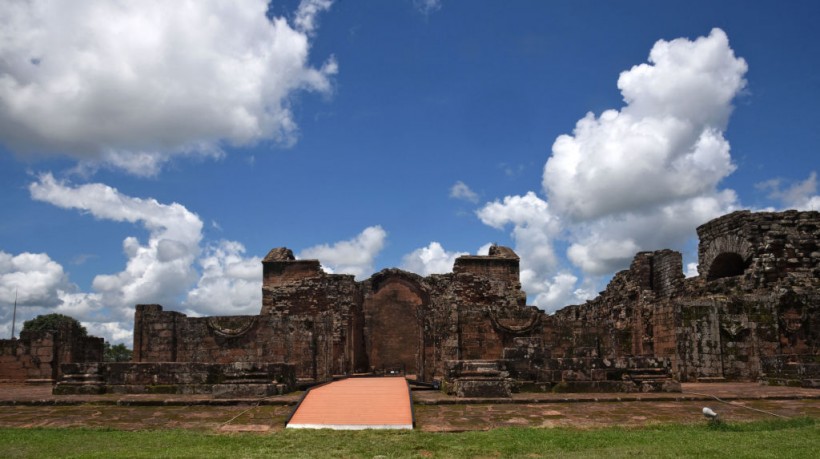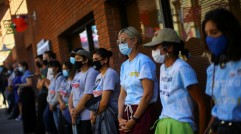Paraguay: History-Rich Places You Should Visit at 'The Heart of South America'

While many travelers may choose to bypass the landlocked country of Paraguay in favor of its larger and more renowned neighbors, such as Brazil and Argentina, overlooking Paraguay means missing out on its rich cultural and historical allure.
Despite its relatively low international profile, Paraguay boasts beautiful historical sites that narrate the country's history from the days of Spanish colonization to the 20th-century structures, symbolizing the country's path to modernization.
Whether easily accessible or hidden within the rugged landscape, each historical site promises a worthwhile adventure for those who choose to explore it.
READ NEXT: Top 5 Paraguay Festivals
Here are some of the most notable Paraguay historical places:
Asunción
Paraguay's capital city, Asunción, serves as an ideal starting point for delving into the country's history, Canadian Traveller noted.
Established by Spanish conquistadors in 1537, Asuncion stands as one of the oldest cities in Latin America.
Despite no longer holding its former reputation, the city was once among South America's wealthiest. Today, visitors can appreciate the architectural legacy of that prosperity.
Exploring Asunción provides glimpses of the city's history through landmarks like the Casa de la Independencia Museum, Paraguay's oldest building, and the Palacio de los López in the Calle Palma historical district.
Walking through the ornate Baroque-style halls of the Asunción Cathedral or the impressive National Congress building in the city's modern quarters further enriches the historical experience.
Fort Boquerón and the Chaco
While the world's attention was fixed on hostilities in Europe in 1932, Paraguay found itself in a significant war with Bolivia, known as the Chaco War.
A crucial battleground during this conflict was Fort Boquerón and the surrounding Chaco region.
In the summer of 1932, the fort fell to Bolivian forces, only to be besieged later by Paraguayan Lieutenant Colonel José Félix Estibarriba, leading 7,000 troops against 450 entrenched Bolivians.
Despite overwhelming numbers, Estibarriba eventually recaptured the fort, albeit with substantial losses.
Today, visitors can explore the intricate trench system within Fort Boquerón, which played a vital role in its defensibility against invaders.
Beyond navigating the trenches, touring the walls, and examining early Paraguayan weaponry from the period, visitors can delve into artifacts showcasing Paraguay's brief history with modern warfare at the museum on-site.
This historical site provides a vivid glimpse into Paraguay's past and its involvement in the Chaco War.
Palacio De López
The striking historic palace, an integral landmark in Paraguay, serves as the official workplace for the President and the seat of the government.
Located in the country's city center alongside the bay of Paraguay, this Neo-Classical emblematic building allows visitors to appreciate splendid views from its expansive, well-maintained garden.
Built with influences from numerous European artists, the palace features magnificent architecture, complemented by fine night lighting that enhances its allure.
While visitors are not allowed to enter the building, they can still admire it from the outside, revel in its grandeur, and take memorable photographs.
This iconic site encapsulates the rich history and significance of Paraguay's seat of government.
La Santísima Trinidad de Paraná
The Jesuits played a significant role in the establishment of 30 missions in the 17th and 18th centuries, spanning present-day Paraguay, Brazil, and Argentina, as per Top List.
La Santísima Trinidad de Paraná, founded in 1706 and completed in 1712, was among these missions.
The primary objective of these missions was to convert the indigenous Guaraní people to Christianity while also safeguarding Spanish commercial interests in the region.
Recognizing the cultural and historical importance of these missions, UNESCO added La Santísima Trinidad del Paraná to the World Heritage List in 1993.
Today, it stands as an archaeological ruin, preserving elements such as a plaza, main church and little church, belfry, college and cloister, houses, gardens, and workshops.
This well-preserved complex offers a tangible link to the past, showcasing the intricate blend of religious, cultural, and architectural influences that shaped the region during this period.
READ MORE: Chile Tourist Spots
This article is owned by Latin Post.
Written by: Bert Hoover
WATCH: Traveling to PARAGUAY in 2024? You NEED To Watch This Video! - From Tales From The Road
Subscribe to Latin Post!
Sign up for our free newsletter for the Latest coverage!














